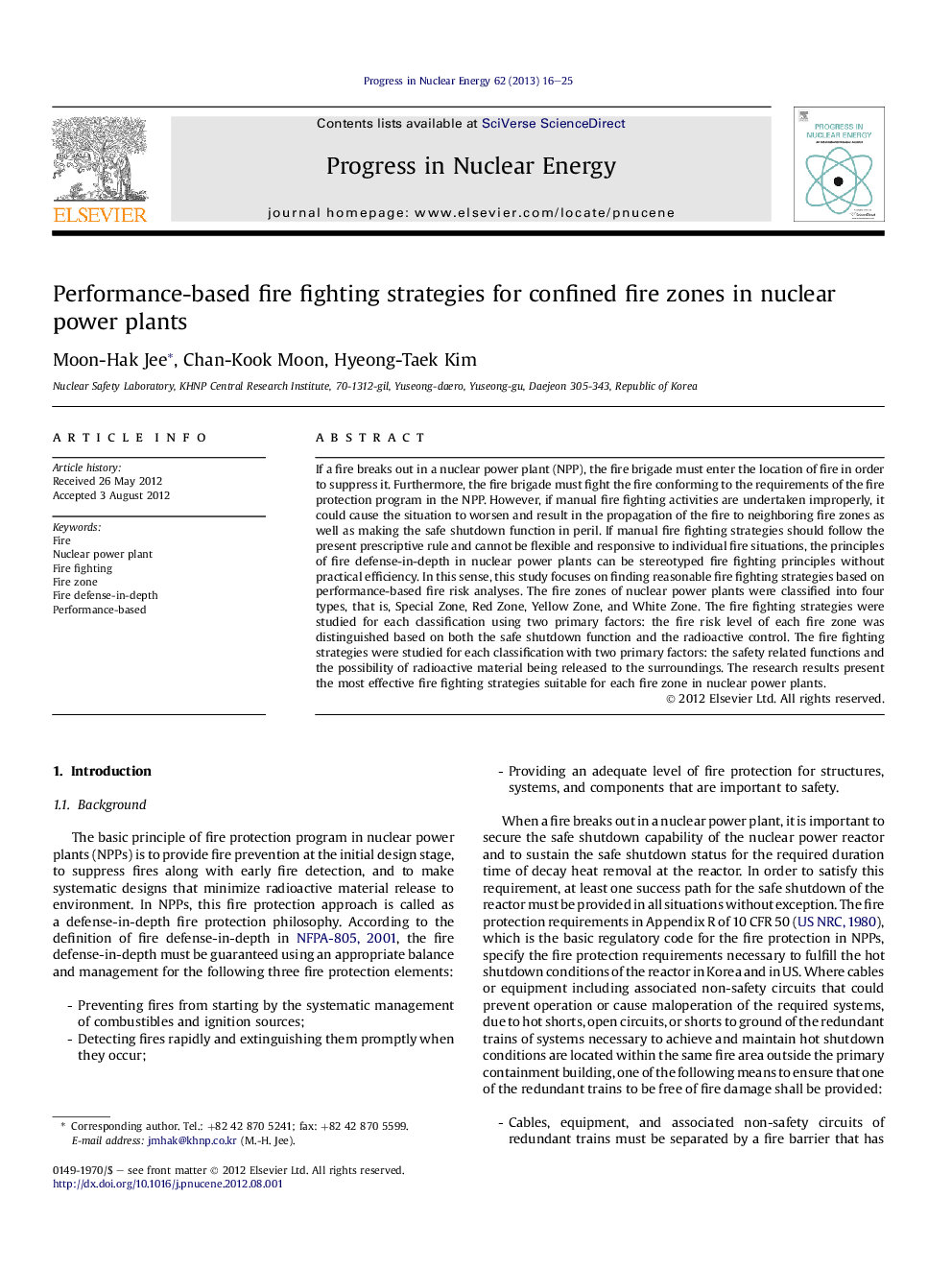| Article ID | Journal | Published Year | Pages | File Type |
|---|---|---|---|---|
| 1740907 | Progress in Nuclear Energy | 2013 | 10 Pages |
If a fire breaks out in a nuclear power plant (NPP), the fire brigade must enter the location of fire in order to suppress it. Furthermore, the fire brigade must fight the fire conforming to the requirements of the fire protection program in the NPP. However, if manual fire fighting activities are undertaken improperly, it could cause the situation to worsen and result in the propagation of the fire to neighboring fire zones as well as making the safe shutdown function in peril. If manual fire fighting strategies should follow the present prescriptive rule and cannot be flexible and responsive to individual fire situations, the principles of fire defense-in-depth in nuclear power plants can be stereotyped fire fighting principles without practical efficiency. In this sense, this study focuses on finding reasonable fire fighting strategies based on performance-based fire risk analyses. The fire zones of nuclear power plants were classified into four types, that is, Special Zone, Red Zone, Yellow Zone, and White Zone. The fire fighting strategies were studied for each classification using two primary factors: the fire risk level of each fire zone was distinguished based on both the safe shutdown function and the radioactive control. The fire fighting strategies were studied for each classification with two primary factors: the safety related functions and the possibility of radioactive material being released to the surroundings. The research results present the most effective fire fighting strategies suitable for each fire zone in nuclear power plants.
► Fire zones were categorized into four types. ► Zone types; Special Zone, Red Zone, Yellow Zone, and White Zone. ► The research results suggest the effective 4 methods for fire fighting. ► Methods; ventilation, combustible control, gas injection, manual suppression. ► The paper suggests a realistic fire fighting strategy in NPPs.
